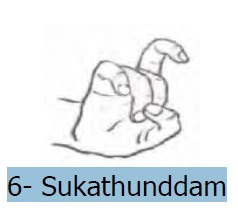Mohiniattam literally means the dance of the enchantress. Born in Kerala
 Mohiniattam
Mohiniattam
Mohiniattam literally means the dance of the enchantress. Born in Kerala, Mohiniattam is the female counterpart of male dominated Kathakali.
One legend says that the princess of Travancore, created and performed this enchanting dance in secret to invoke Lord Padmanabha (Vishnu) to life who she wished as her husband. Another legend is that the women of Kerala who were denied the right to learn Kathakali, created their own dance inspired by Kathakali, yet highly feminine, sensuous. A dance form that makes no sound with its footwork (perhaps to avoid attention).
Kerala, a coastal state, is rich in its landscape with valleys of swaying coconut palms, vast paddy fields and the blue waves of the sea. Mohiniattam literally translates these features into the basic movement language of the dance form, which is marked by circular movements and circular spatial patterns, making the style extremely graceful and sensuous.
Lasya (languid grace) and Sringara (beauty and love) are the essence and the basic mood of Mohiniattam. In Mohiniattam it is compulsory to wear white costumes where as in other dance forms white may be a colour of choice. Traditionally, Mohiniattam is taught, learnt and performed by
women only.
Source : nrityagram.org
 Mohiniattam
Mohiniattam Mohiniattam literally means the dance of the enchantress. Born in Kerala, Mohiniattam is the female counterpart of male dominated Kathakali.
One legend says that the princess of Travancore, created and performed this enchanting dance in secret to invoke Lord Padmanabha (Vishnu) to life who she wished as her husband. Another legend is that the women of Kerala who were denied the right to learn Kathakali, created their own dance inspired by Kathakali, yet highly feminine, sensuous. A dance form that makes no sound with its footwork (perhaps to avoid attention).
Kerala, a coastal state, is rich in its landscape with valleys of swaying coconut palms, vast paddy fields and the blue waves of the sea. Mohiniattam literally translates these features into the basic movement language of the dance form, which is marked by circular movements and circular spatial patterns, making the style extremely graceful and sensuous.
Lasya (languid grace) and Sringara (beauty and love) are the essence and the basic mood of Mohiniattam. In Mohiniattam it is compulsory to wear white costumes where as in other dance forms white may be a colour of choice. Traditionally, Mohiniattam is taught, learnt and performed by
women only.
Source : nrityagram.org




























